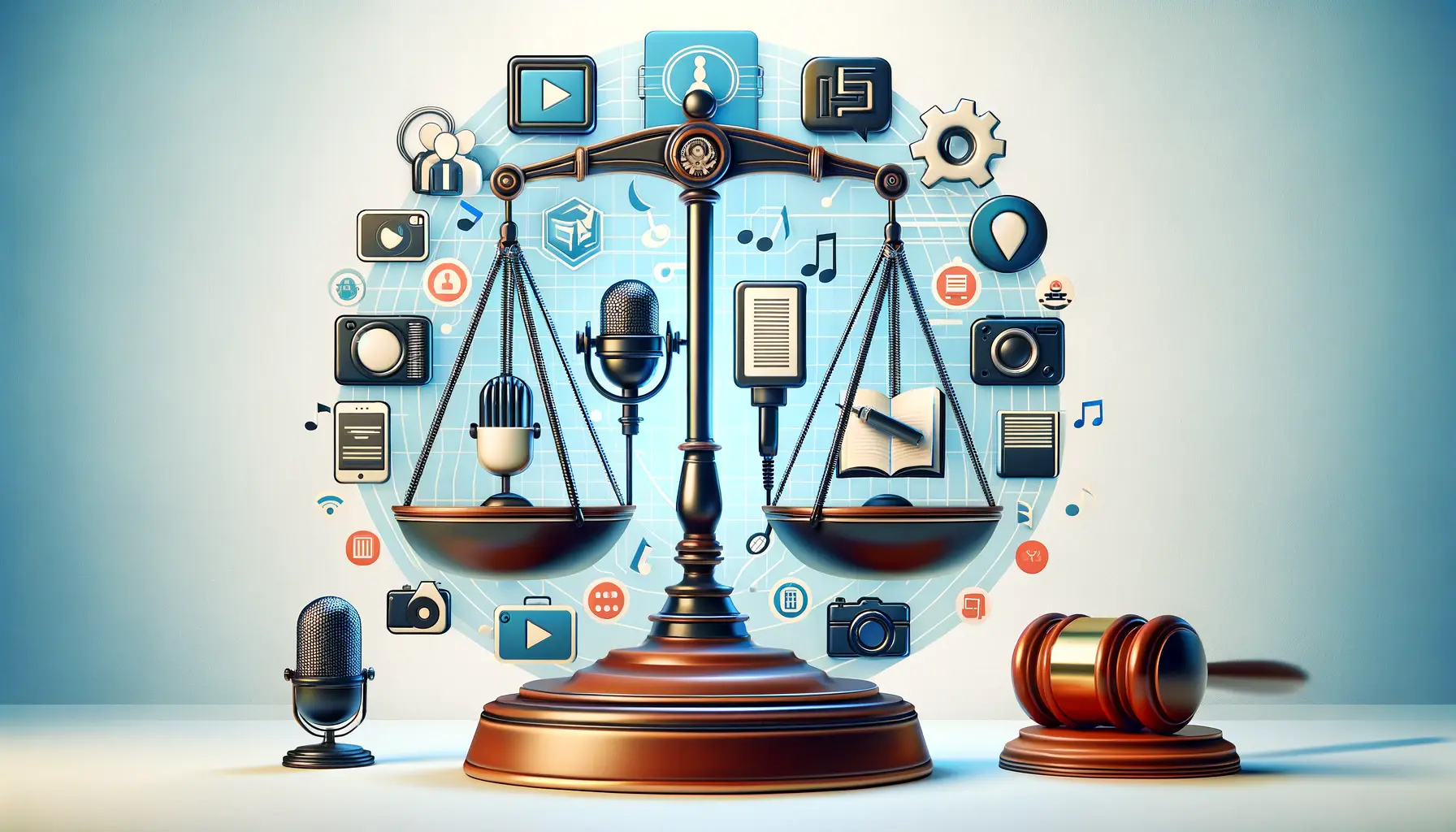The digital landscape is continuously evolving, and with it, the strategies for SEO (Search Engine Optimization) are also changing.
In the realm of SEO, visual diversification, particularly through the use of GIFs and animations, has emerged as a powerful tool to enhance user engagement and improve search rankings.
This article delves into the multifaceted role of GIFs and animations in SEO, exploring how they can be leveraged effectively to captivate audiences and boost online visibility.
Visual content, especially in the form of GIFs and animations, offers a dynamic way to present information and ideas.
Unlike static images, these visual formats bring a sense of motion and life to web pages, making them more engaging and memorable.
This not only enhances the user experience but also signals to search engines that the content is valuable and worth ranking higher.
Let’s explore how GIFs and animations can be integrated into SEO strategies to achieve optimal results.
- Understanding the Impact of GIFs and Animations on SEO
- Best Practices for Incorporating GIFs and Animations in SEO
- Enhancing User Engagement with GIFs and Animations
- Technical Aspects of Using GIFs and Animations for SEO
- Integrating GIFs and Animations with SEO Content Strategy
- Challenges and Solutions in Using GIFs and Animations for SEO
- Future Trends in GIFs and Animations for SEO
- Conclusion: Harnessing the Power of Visual Diversification in SEO
- FAQs on Visual Diversification: GIFs and Animations in SEO
Understanding the Impact of GIFs and Animations on SEO
GIFs and animations, when used judiciously, can significantly impact a website’s SEO performance.
These visual elements can make content more engaging, leading to increased time spent on the site and reduced bounce rates.
Search engines like Google often reward websites that offer a good user experience with higher rankings.
However, it’s crucial to balance the use of these elements to avoid slowing down page load times, which can negatively impact SEO.
Animations and GIFs also contribute to the visual appeal of a website, making it more attractive and memorable to visitors.
This can lead to increased sharing and backlinks, which are vital for SEO.
When users share visually appealing content, it not only increases the site’s visibility but also signals to search engines that the content is valuable and relevant, further boosting its ranking potential.
Optimizing GIFs for SEO
Optimizing GIFs for SEO involves more than just adding them to your website.
It’s essential to ensure that they are properly compressed to reduce file size without compromising quality.
This helps in maintaining fast page load times, a critical factor in SEO.
Additionally, using descriptive file names and alt text for GIFs can improve their discoverability in image searches, further enhancing SEO efforts.
Another aspect of optimization is the strategic placement of GIFs.
Placing them near relevant textual content can help in contextualizing them, making it easier for search engines to understand and index the content effectively.
This strategic placement also contributes to a cohesive and engaging user experience.
Key Point: GIFs and animations, when optimized and strategically placed, can significantly enhance a website’s SEO by improving user engagement and increasing shareability.
Best Practices for Incorporating GIFs and Animations in SEO
Effectively integrating GIFs and animations into your SEO strategy requires adherence to best practices.
These practices ensure that your visual content not only enhances the user experience but also aligns with SEO goals.
Here are some key guidelines to follow:
Choosing the Right GIFs and Animations
Selecting the appropriate GIFs and animations is crucial.
They should be relevant to the content and add value to the user’s understanding.
Irrelevant or excessive use of these visuals can distract users and detract from the overall message.
- Ensure relevance to the topic or message.
- Avoid overloading pages with too many animations.
- Choose high-quality visuals that are clear and appealing.
Optimizing File Size and Quality
Optimizing the file size and quality of GIFs and animations is essential for maintaining fast page load times, a key SEO factor.
Large files can slow down your website, negatively impacting user experience and SEO rankings.
- Compress GIFs and animations to reduce file size.
- Use tools like Adobe Photoshop or online compressors for optimization.
- Test the quality post-compression to ensure clarity is maintained.
Strategic Placement and Usage
The placement of GIFs and animations on your webpage can influence their effectiveness in SEO.
They should be used strategically to complement and enhance the content.
- Place GIFs near relevant text to provide context.
- Use animations to break up long sections of text, making content more digestible.
- Avoid placing large files above the fold, which can delay page loading.
Note: While GIFs and animations can significantly enhance the visual appeal and engagement of a website, their overuse or improper optimization can lead to negative SEO consequences.
Enhancing User Engagement with GIFs and Animations
One of the primary benefits of using GIFs and animations in SEO is the enhancement of user engagement.
These visual elements can make content more interactive and enjoyable, leading to a better user experience.
Here’s how GIFs and animations can be used to boost engagement:
Creating Interactive Content
GIFs and animations can transform static content into interactive experiences.
By incorporating these elements, you can encourage users to spend more time on your site, exploring and interacting with your content.
- Use GIFs to demonstrate products or concepts in a dynamic way.
- Implement animations to guide users through your website, enhancing navigation.
- Create interactive infographics that combine animation with information.
Improving Content Understandability
Animations and GIFs can play a significant role in making complex information more understandable.
They can break down intricate concepts into digestible visual representations, aiding in comprehension.
- Utilize animations to simplify complex data or processes.
- Employ GIFs to provide visual examples or step-by-step guides.
- Use animated charts or graphs to represent data in an engaging manner.
Increasing Content Shareability
Visually appealing and engaging content is more likely to be shared across social media and other platforms.
GIFs and animations can make your content stand out, encouraging users to share it with their networks.
- Create share-worthy GIFs that resonate with your audience.
- Use animations in social media posts to increase engagement and shares.
- Encourage users to share your animated content by making it easily accessible and relatable.
Idea: Leveraging GIFs and animations in your content not only enhances user engagement but also increases the likelihood of your content being shared, amplifying your SEO efforts.
Technical Aspects of Using GIFs and Animations for SEO
While GIFs and animations can significantly enhance a website’s appeal, their technical implementation is crucial for SEO success.
Understanding and managing the technical aspects ensures that these visual elements support rather than hinder your SEO efforts.
Ensuring Mobile Responsiveness
In today’s mobile-first world, ensuring that GIFs and animations are responsive and display correctly on all devices is essential.
This not only improves user experience but also aligns with Google’s mobile-first indexing.
- Test GIFs and animations on various devices to ensure proper display.
- Use responsive design techniques to adjust visual content to different screen sizes.
- Optimize file sizes for mobile to reduce loading times.
Accessibility Considerations
Accessibility is a crucial aspect of web design, and it extends to the use of GIFs and animations.
Ensuring that your content is accessible to all users, including those with disabilities, is important for both ethical and SEO reasons.
- Provide alternative text for GIFs and animations for screen reader users.
- Avoid animations that can cause seizures, such as flashing or blinking effects.
- Ensure that animations do not hinder the navigability for users with disabilities.
Optimizing for Page Load Speed
Page load speed is a critical factor in SEO, and GIFs and animations can significantly impact it.
Optimizing these elements to load quickly is essential to maintain a fast and efficient website.
- Compress GIFs and animations to reduce their impact on load times.
- Use lazy loading techniques to delay the loading of non-essential visuals.
- Monitor page speed using tools like Google PageSpeed Insights to identify areas for improvement.
Truth: Proper technical implementation of GIFs and animations, including mobile responsiveness, accessibility, and optimization for page load speed, is crucial for maximizing their SEO benefits.
Integrating GIFs and Animations with SEO Content Strategy
Integrating GIFs and animations into your SEO content strategy requires a thoughtful approach.
It’s not just about adding visual elements to your website but about how these elements can work in harmony with your overall SEO goals.
Aligning Visuals with SEO Goals
Every GIF and animation you use should serve a purpose and align with your SEO objectives.
Whether it’s to increase dwell time, enhance user experience, or explain complex topics, your visual content should contribute to your SEO strategy.
- Use GIFs and animations to complement and reinforce your textual content.
- Ensure that visual elements are in line with your targeted keywords and SEO themes.
- Regularly review your visual content strategy to ensure it aligns with evolving SEO goals.
Content Diversification and User Experience
Diversifying your content with GIFs and animations can significantly enhance the user experience.
A mix of text, images, videos, and animations can cater to different user preferences, making your content more engaging and accessible.
- Incorporate a variety of content types to appeal to a broader audience.
- Use animations to break monotony in long-form content.
- Ensure that the use of GIFs and animations adds value and does not overwhelm the user.
Tracking and Analyzing Performance
Like any other aspect of SEO, the impact of GIFs and animations should be tracked and analyzed.
This helps in understanding their effectiveness and making data-driven decisions for future content strategies.
- Use analytics tools to track user engagement metrics like time on page and bounce rate.
- Analyze the performance of pages with GIFs and animations against those without.
- Adjust your strategy based on the data to optimize the use of visual content for SEO.
Featured Info: Integrating GIFs and animations into your SEO strategy should be a data-driven process, aligning with your SEO goals and continuously evolving based on performance metrics.
Challenges and Solutions in Using GIFs and Animations for SEO
While GIFs and animations offer numerous benefits for SEO, they also present certain challenges.
Addressing these challenges effectively is key to leveraging the full potential of visual diversification in your SEO strategy.
Challenge: Balancing Visual Appeal and Page Performance
One of the main challenges is balancing the visual appeal of GIFs and animations with the overall performance of the website.
High-quality visuals can slow down page load times, negatively impacting SEO.
- Solution: Optimize file sizes and use efficient formats to maintain a balance between quality and performance.
- Solution: Implement lazy loading for animations to improve page load times.
- Solution: Regularly monitor website performance and make adjustments as needed.
Challenge: Maintaining Relevance and Context
Ensuring that GIFs and animations are relevant and contextually appropriate can be challenging.
Irrelevant visuals can confuse users and detract from the content’s message.
- Solution: Carefully select visuals that enhance and relate to the content.
- Solution: Avoid using GIFs and animations as mere decorative elements; they should add value to the content.
- Solution: Regularly review and update visual content to ensure ongoing relevance.
Challenge: Accessibility and User Experience
Another challenge is ensuring that GIFs and animations do not hinder the accessibility and user experience of the website, especially for users with disabilities or slower internet connections.
- Solution: Provide alternative text and descriptions for all visual elements.
- Solution: Avoid using animations that can cause discomfort or seizures, such as flashing lights.
- Solution: Offer options to pause or stop animations for users who prefer a static experience.
False Information: Assuming that adding GIFs and animations to a website will automatically improve SEO is a misconception. Their effective use requires careful planning, optimization, and alignment with overall SEO strategy.
Future Trends in GIFs and Animations for SEO
The use of GIFs and animations in SEO is not static; it evolves with technological advancements and changing user preferences.
Staying ahead of these trends is crucial for maintaining an effective SEO strategy that leverages visual diversification.
Emerging Technologies and Formats
New technologies and formats are continually emerging, offering more sophisticated ways to use GIFs and animations.
These advancements can lead to better quality visuals with smaller file sizes, enhancing both user experience and SEO.
- Expect developments in image compression technologies that maintain quality while reducing file size.
- Look out for new animation formats that offer better performance and compatibility across different platforms.
- Stay updated with SEO trends and how they relate to visual content to remain competitive.
Increased Focus on Mobile Experience
With the growing dominance of mobile internet usage, the focus on optimizing GIFs and animations for mobile devices will intensify.
Mobile-friendly visuals will be crucial for SEO success.
- Optimize animations for faster loading on mobile devices.
- Ensure that GIFs and animations are responsive and display correctly on all screen sizes.
- Consider the impact of visual elements on mobile user experience and SEO.
Integration with Advanced SEO Techniques
GIFs and animations will increasingly be integrated with advanced SEO techniques, such as AI-driven content optimization and voice search optimization.
This integration will open new avenues for using visual content in SEO.
- Explore the use of AI to optimize GIFs and animations for specific audiences and search intents.
- Consider how visual content can be optimized for voice search and other emerging SEO fields.
- Stay informed about new SEO tools and techniques that can enhance the effectiveness of visual content.
Idea: The future of GIFs and animations in SEO lies in embracing new technologies, focusing on mobile optimization, and integrating with advanced SEO techniques to stay ahead in the digital landscape.
Conclusion: Harnessing the Power of Visual Diversification in SEO
The integration of GIFs and animations into SEO strategies represents a dynamic shift in how we approach digital content.
As we have explored, these visual elements offer a unique opportunity to enhance user engagement, improve website performance, and ultimately boost search engine rankings.
The key to success lies in the thoughtful and strategic use of these tools, ensuring they align with broader SEO goals and user experience standards.
Maximizing the SEO Benefits of GIFs and Animations
To fully harness the power of visual diversification in SEO, it’s essential to focus on optimization and relevance.
This involves not only choosing the right visuals but also ensuring they are technically sound and contribute positively to the user experience.
By doing so, GIFs and animations can become a valuable asset in your SEO arsenal, driving traffic and engagement in a visually saturated digital world.
- Optimize for mobile responsiveness and page load speed.
- Ensure accessibility and user-friendly navigation.
- Regularly update and align visuals with current SEO trends and user preferences.
Looking Ahead: The Evolving Role of Visuals in SEO
As technology continues to evolve, so too will the role of GIFs and animations in SEO.
Staying abreast of emerging trends and adapting to new formats and technologies will be crucial for maintaining an edge in the competitive landscape of search engine optimization.
The future of SEO is visually rich, and those who can effectively integrate and optimize these elements will find themselves at the forefront of digital marketing success.
- Embrace new technologies and formats for enhanced visual content.
- Focus on creating mobile-optimized, high-quality visuals.
- Integrate advanced SEO techniques with visual content strategies.
In conclusion, visual diversification through GIFs and animations offers a compelling avenue for enhancing SEO strategies.
When executed with precision and creativity, these elements can significantly elevate a website’s appeal, user engagement, and search engine performance.
As we move forward, the integration of these dynamic visuals will undoubtedly play an increasingly vital role in the ever-evolving landscape of SEO.
Want your website to top Google search rankings? Leave the SEO to our professional agency!
FAQs on Visual Diversification: GIFs and Animations in SEO
Explore common questions about integrating GIFs and animations into your SEO strategy for visual diversification.
GIFs enhance SEO by improving user engagement and dwell time on a page, which are key factors in search engine rankings.
Yes, animations can significantly benefit SEO by making content more interactive and engaging, leading to better user experience.
GIFs can affect page load speed; hence, optimizing their size and format is crucial for maintaining fast website performance.
Yes, properly optimized animations can enhance mobile SEO by improving user experience on mobile devices.
Optimize GIFs by compressing file sizes, using descriptive alt texts, and ensuring they are contextually relevant to content.
Animations can impact accessibility; providing alternative text and ensuring they don’t hinder navigation is important.
GIFs play a significant role in user engagement by visually illustrating concepts and adding dynamism to content.
Using too many GIFs can slow down page load times and distract from content, potentially harming SEO performance.









